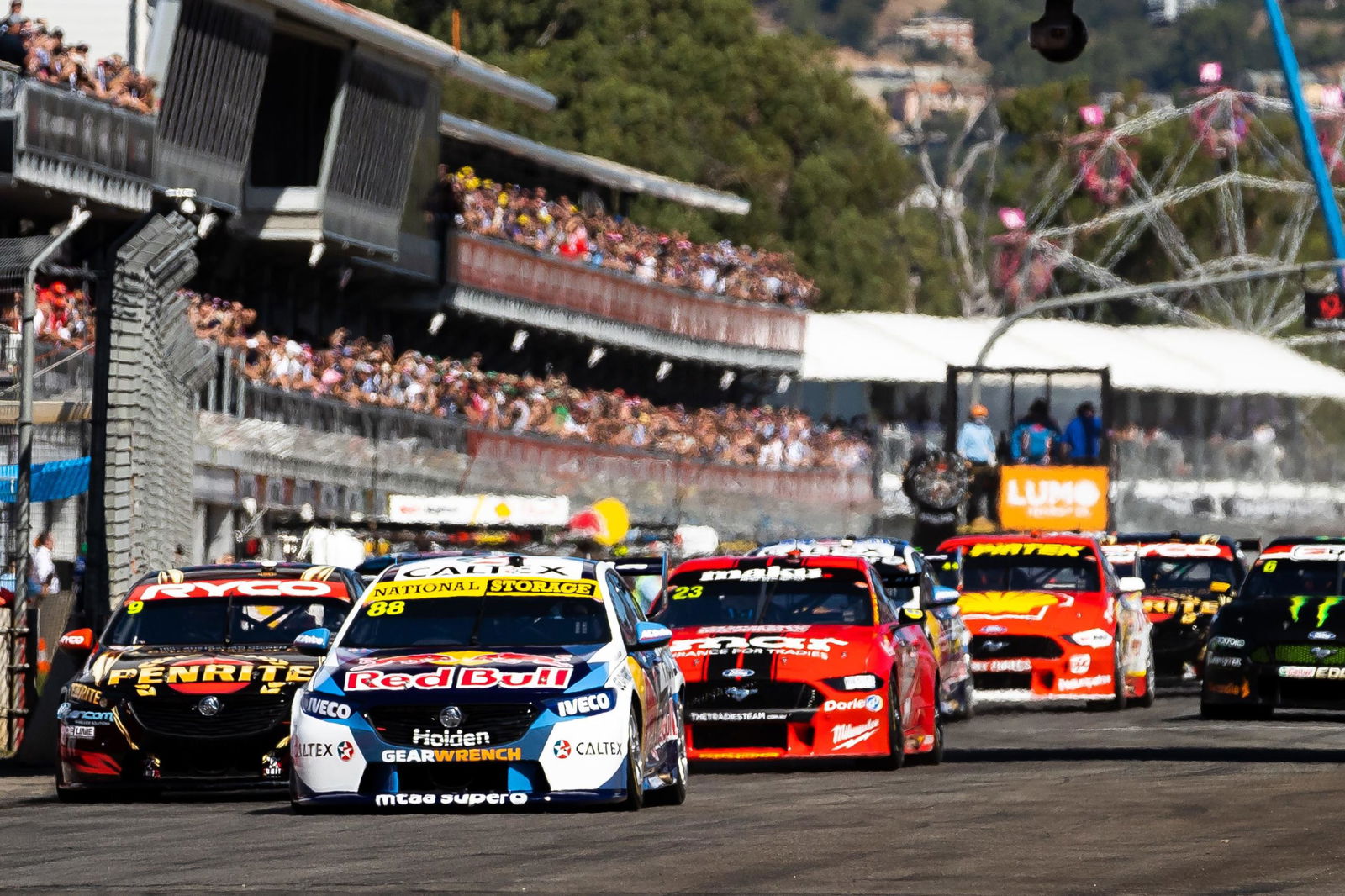
Supercars stands at a crossroads. For the first time since the early 1990s the very fabric of the sport is open to debate as the automotive landscape in Australia shifts dramatically with the death of Holden.
A foundation stone of touring car racing in this country from its earliest days, the loss of Holden throws into question the very nature of tin-top racing in Australia. With no Holden model to race against the Ford Mustang, Supercars is looking for a new brand (or brands) to enter that can create that same level of competition that has made the sport thrive over the last three decades.
Supercars CEO Sean Seamer has made no secret that he believes the sport’s future lies down the path of two-door sports cars, similar to the Mustang. It’s hard to argue that the arrival of the Mustang didn’t give the sport a boost and rejuvenate the Holden v Ford rivalry – so the arrival of new brands with sporty coupes would likely be a major shot-in-the-arm for the sport.
Sadly, it’s not going to happen; at least not with factory-backed racing teams.
Even before the COVID-19 pandemic dramatically cut sales almost in half in April, the new car market was in decline after years of record growth. The harsh reality is the COVID-19 induced slow down of the economy is going to put greater pressure on the car industry as a whole and will inevitably lead to belt-tightening, which is likely an insurmountable challenge for Supercars to overcome.

Even without this extra problem, it was already difficult to attract and keep new brands involved in the sport, as it has discovered during the ‘Car of the Future’ era. The twin failures of Nissan and Volvo to win any major accolades (a championship or a Bathurst 1000 title) during their respective run in the category is another obstacle for Supercars to overcome in convincing a new manufacturer (or multiple) to sign up. While Volvo, Garry Rogers Motorsport and Scott McLaughlin did an admirable job, it was a largely Australian-driven project and it failed at its most important job – selling more Volvos.
For a prospective entrant, seeing the limited impact both the Swedish and Japanese brand had would be a deterrent, even if they could get the bean-counters to sign off once the car industry recovers from its current lean period.
Possible candidates
Before you dismiss me as a negative naysayer, let’s take an analytical view of the sports car market in Australia. Our source is the 2019 VFacts data released by the Federal Chamber of Automotive Industries (FCAI). We’ve chosen to look at last year’s numbers because it offers a more complete picture, but it must be stated that the early indications from 2020 are not good.
In 2019 a total of 14,712 sports cars were sold in this country, split across three categories by VFacts- under $80,000, over $80,000 and over $200,000.
We can rule out the top segment of the market, with the $200K segment the battleground for exotic brands Ferrari, Porsche, Lamborghini and co. which already play in the GT3 category and don’t suit the nature of touring car racing.
At the cheapest end of the market you have the likes of the Mustang and Nissan 370Z as well as the Toyota 86, Subaru BRZ and Mazda MX-5. All of which are either too small or too old to be seriously considered for a Supercars future by any of the respective brands.

The over $80k part of the market represents some more realistic competition – the Audi RS5, BMW M4, Jaguar F-Type, Lexus RC F and LC, Mercedes-AMG C63 and Toyota Supra.
Over the years Supercars has made no secret of its desire to attract the big three German brands – Audi, BMW and Mercedes – but so far none have indicated any interest in competing against a mainstream brand like Ford. In fact, Mercedes-Benz Australia was vocal with its lack of support for the Erebus Motorsport E63 project, despite the team getting assistance from its European-based racing operations.
Jaguar was mentioned in Supercars circles during the season-opening weekend in Adelaide as a possible candidate to join the grid. While the sleek F-Type would no doubt make a good-looking racing car, there are some very large questions hovering over the brand that make any significant investment in an Australian motor racing program unlikely.
For starters, the brand has had a rough start to 2020, recording a sales decline of nearly 40 per cent which follows a 15 per cent drop-off in 2019. Added to that are financial issues for the brand globally, with parent company Jaguar Land Rover looking to cut costs and lay-off workers.
Toyota represents Supercars most logical and realistic prospect for recruitment. The latest generation Supra is still early in its lifecycle, so it should be a relevant car for the Japanese brand for the next several years. While more expensive than the Mustang (it starts at $84,900 compared to $50,990 for the EcoBoost ‘Stang) it’s similar in size and concept.
Crucially for Supercars, the Japanese is in the midst of a high-performance push with its new Gazoo Racing brand. Globally the company is attempting to build a similar performance operation to BMW M or Mercedes-AMG, that brings together its racing activities with its road cars. The Supra (or GR Supra to give it it’s correct title in deference to Gazoo Racing) will soon be joined by the GR Yaris, which is a homologation special built for its World Rally team; that’s a strong indication of how serious Toyota is taking both motorsport and performance cars.
While publicly the company has denied any interest in Supercars, the opportunity to grow the Gazoo Racing brand on Australia’s biggest motorsport stage could have appeal.
The future can still be bright – just different
That might sound a bit bleak, with no high-probability for recruiting a new brand to replace Holden. But there is another way.
The introduction of Gen3 allows for Supercars to start fresh, taking a new tactic that could see it add greater diversity to the grid and cut the costs to the teams. Put simply, the Gen3 rules need to be written to reduce the dependency on car makers to the sport and allow the individual teams to be more flexible with what they race.

The sport has already been moving towards more common parts and the arrival of Gen3 would allow for a wholesale change to a spec chassis and engine that teams could then shape their own composite bodywork (either coupe or sports sedan) over; obviously within certain parameters to achieve aerodynamic parity. That would make them cheaper to buy, cheaper to service and allow for more brands to get involved without having to spend major dollars.
The British Touring Car Championship adopted a similar style of regulations (albeit based around 2.0-litre, front-wheel drive small cars) in 2011 and has seen a diverse field of privately-entered (and sometimes factory-supported) models from Audi, BMW, Ford, Honda, Hyundai, MG, Subaru, Toyota and Volkswagen – to name a few.
Using this model would allow the race teams to sell more affordable sponsorship packages to the car makers, rather than requiring full-blown factory-based racing programs. That would be a more affordable, and therefore more appealing, prospect to those manufacturers on the periphery of Supercars racing.
One car company executive I have spoken to in the past admitted an interest in taking a new model racing, but was shocked at the rumoured money it cost Volvo to get on the grid and admitted his brand would never be in a position to spend millions on a domestic racing program. But if a Supercar team could offer him and his brand a gateway into the sport by sponsoring a team running a silhouette version of its production car wrapped over a control chassis for a few hundred thousands dollars it could change the situation.
And even if the car brands still choose not to get involved, Supercars needs to ensure the cost of building a Gen3 car is dramatically reduced. Motor racing teams are both resourceful and competitive, even without manufacturer support (which most Supercar squads haven’t had for years anyway) they will find a way to build new cars when the current Holdens and Ford have served their purpose.
If applied in the right way there would be nothing stopping a Supercars grid in 2022 or ‘23 looking more diverse than it has since the 1980s. Imagine tuning in to watch Bathurst and seeing a racey-looking Supra alongside a Mustang with a Jaguar and BMW M4 on the second row. Would it really matter if they had manufacturer support?
This may be a difficult time for Supercars and the car industry but from it can emerge a new era for the sport that could, if managed correctly, see it thrive throughout the next decade.














Discussion about this post